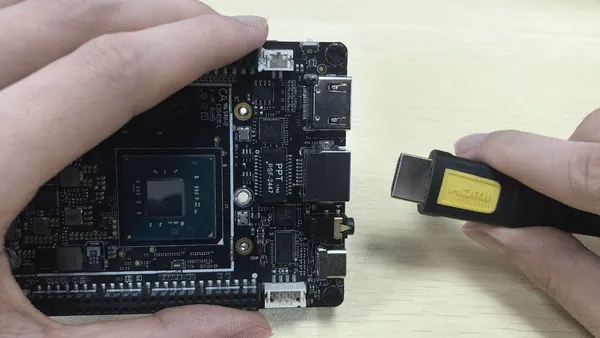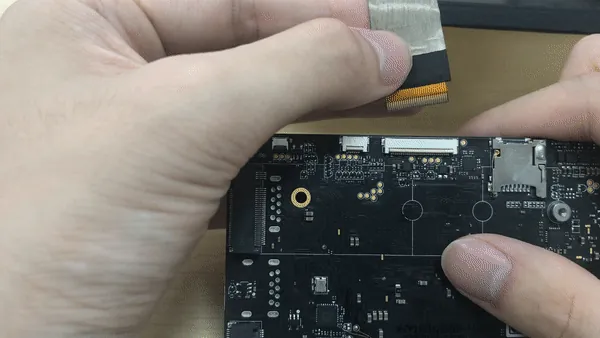Display and Touch Connections¶
This document will go over the different ways you can display the screen from your LattePanda. It will cover what you will need and the installation steps.
Warning
- When touching the LattePanda board, make sure to ground yourself before touching the board. Failure to ground yourself may cause static discharge into board components, which can damage your LattePanda!
- The touch screen is made of glass, which is corrosion-resistant, but the material itself is easy to crack. Please be careful not to press it to the edge during installation!
Overview¶
4 Ways to Extend Displays on the LattePanda Alpha¶
- HDMI - Standard desktop usage
- Type C to HDMI / DP converter - Standard desktop usage
- Connect to Macbook Pro or any other development PC via Streaming Cable - Designed for Developers
- eDP displays - Designed for embedded applications
4K Capability¶
Max resolution from different physical display output channels on Alpha: 1. HDMI 4096x2304 @24 Hz (1.4a) 2. DP 4096x2304 @60 Hz (1.2) 3. eDP 4096x2304 @60 Hz (1.4)
HDMI¶
What You Will Need¶
- HDMI cable
- TV or monitor with HDMI port
Installation Steps¶
- Connect an HDMI cable to the LattePanda's HDMI port.
- Connect the other end of the HDMI cable to a TV or monitor.

DP / DVI / VGA¶
What You Will Need¶
Note
In order to power on the LattePanda Alpha/Delta with the USB Type C port while using a USB Type C adapter, the adapter must have Power Delivery passing current through.
- USB Type C to DVI / VGA / DP adapter or hub
- Display cable (Depending on adapter type)
Installation Steps¶
- Connect the USB Type C adapter to the LattePanda Alpha/Delta's USB Type C port.
- Connect the display cable (DVI, VGA, DP) to the USB Type C adapter.
- Connect the other end of the display cable to the TV or monitor.
Embedded DisplayPort (eDP)¶
Note
The LattePanda may not have driver support for 3rd party eDP displays. In order to use a 3rd party display, it may require the installation of other development drivers.
What You Will Need¶
- LattePanda Alpha/Delta eDP Display
Installation Steps¶
Warning
Make sure the LattePanda is disconnected from its power source before connecting the display. Make sure the cable is installed correctly before turning the power on. Failure to follow these instructions below may cause a short circuit and damage the LattePanda or display.
- Make sure the LattePanda is powered off and the power supply cable is disconnected.
- Open the eDP latch on the LattePanda board.
- Align the eDP cable with the LattePanda cable connector. Make sure the copper cable connection pads face the LattePanda connection pads.
- Connect the eDP cable.
- Press down on the latch to secure the cable.
Additional eDP Displays from Community¶
While the LattePanda Alpha/Delta eDP display is officially supported, here are some other displays community members have gotten working.
Touch Panel¶
What You Will Need¶
- Official eDP display for LattePanda Alpha and Delta.
Warning
The MIPI display design for the LattePanda 1st generation is not compatible with the eDP display connectors designed for the Alpha and Delta. This compatibility issue is caused by the different CPU architectures and positioning of circuit elements.
Installation Steps¶
Warning
Make sure the LattePanda is disconnected from its power source before connecting the touch screen. Make sure the cable is installed correctly before turning the power on. Failure to follow these instructions below may cause a short circuit and damage the LattePanda or display.
- Make sure the LattePanda is powered off and the power supply cable is disconnected.
- Open the touch panel latch on the LattePanda board.
- Align the touch panel cable with the LattePanda touch panel connector. Make sure the copper cable connection pads face the LattePanda connection pads.
- Connect the touch panel cable.
- Press down on the latch to secure the cable.
Streaming Cable¶
Please check the docs for a streaming cable here: Getting Started - Streaming Cable
